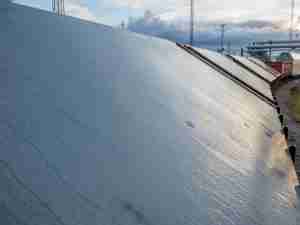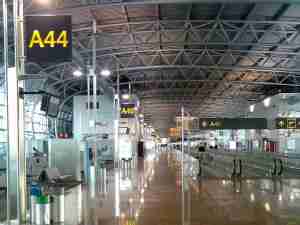Iran’s Mammoth Jet Orders Signal Ambition to Join Airline Elite
By: Christopher Jasper and Deena Kamel Yousef | Jun 22 2016 at 07:31 PM | Air Cargo | International Trade
Iran’s signing this week of an outline deal for 109 Boeing Co. jetliners five months after agreeing to buy 118 from Airbus Group SE underscores the scale of the former pariah state’s airline ambitions.
The purchase of almost 230 planes would create a fleet three-quarters the size of that at British Airways and larger than the current lineup at Abu Dhabi-based Etihad Airways, one of three Persian Gulf carriers that transformed air travel in the years Iran was stymied by trade sanctions linked to its nuclear program.
While it’s not certain that flag-carrier Iran Air will take all of the jets specified under the accords—with the U.S. contract in particular still facing significant hurdles—the arrival of models such as Airbus’s A380 double-decker and Boeing’s 777-9 seems set to swell the business to global proportions.
“There’s no doubt that they want to emulate carriers like Emirates and Etihad,” said John Strickland, an airline analyst at JLS Consulting in London. “People poured scorn on the ability of the Gulf carriers to fill their aircraft but they’ve done so. And Iran has had a bigger air market over the years that’s been put in a straitjacket by the international sanctions.”
Wide-Body Roster
Most of the jets on order are likely to replace older ones that would have been retired years ago had it not been for the block on buying new models, he said.
The planned wide-body fleet is particularly eye-catching, with Iran Air set to operate batches of 425-seat 777-9s, 467-seat 747-8s and 525-seat A380s, with the 12 superjumbos on order matching the number due to be taken by international heavyweights British Airways and Air France.
In addition, the carrier plans to operate 16 A350-1000s, the largest variant of Airbus’s newest twin-aisle model, which can accommodate 366 passengers, and for shorter routes has ordered 45 A330 wide-bodies, including 18 examples of the re-engined Neo version.
Iran Air— which currently fields a fleet including Airbus’s original A300 and Fokker NV 100s from the defunct Dutch planemaker—has also ordered 45 single-aisle A320s, among them 24 Neos, together with the 737 Max, Boeing’s own re-engined narrow-body. It hasn’t said why it wants both models, when carriers tend to take just one to reduce fixed costs.
Broader Aims
Though Iran has long said the lifting of sanctions would spur significant plane orders to serve its 80 million population plus a diaspora of 5 million overseas, a possible fleet of 120 wide-bodies—more than currently operated by long-haul specialists such as Singapore Airlines Ltd.—smacks of wider objectives.
That could include building Tehran into a hub where people change planes on intercontinental journeys, emulating the model established by Emirates of Dubai and followed by Qatar Airways, Etihad and, further west, Turkish Airlines.
The Iranian capital shares similar geographical advantages, located at a crossroads between Europe, Asia, Africa and the Middle East, with most of the Americas also within range.
At the same time the transfer market will be tough to crack with such strong neighboring incumbents, as well as carriers such as Air France-KLM Group and Deutsche Lufthansa AG desperate to hang on to lucrative long-haul traffic.
“Iran is certainly coming from behind,” Strickland said. “But it has the advantage of a large population that will support point-to-point traffic that the Gulf carriers don’t have because of their small home catchments.”








